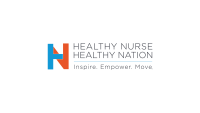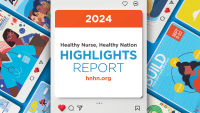As a nurse, you’re the healthcare professional at highest risk of exposure to pathogens in blood and body fluids—whether you work in a hospital, outpatient setting, or home care. Since the inception of universal precautions, we’ve come a long way toward preventing worker injury. Yet, nurses still find themselves in harm’s way from unexpected exposures.
The federal Needlestick Safety and Prevention Act strengthened worker protections by mandating safer devices and rigorous exposure-control plans—and it led to a significant reduction in needlestick injuries. The Centers for Disease Control and Prevention recommends healthcare facilities establish a culture of safety, including a sharps injury prevention program and use of appropriate safety devices. The Occupational Safety and Health Administration requires healthcare organizations to implement an exposure-control plan that addresses employee-protection measures. The plan must include a combination of personal protective clothing and equipment, training, surveillance, and work practices that eliminate or minimize employee exposure risk.
But needlestick injuries aren’t the only means of exposure to pathogens. Mucocutaneous exposure to contaminated blood and body fluids also can cause life-threatening illness in nurses and other healthcare workers. Blood and fluids can splash and splatter unexpectedly during care, use of protective devices, or specimen handling. As our investigation into practices and devices that create a safer work environment broadens, nurses need to be familiar not just with needleless devices but with the growing number of other devices that help prevent splash exposures to the eyes, nose, and mouth.
Preventing injuries is part of the “team sport” of health care. Staff must be included in planning and selecting approaches and equipment to provide a safe workplace. They must follow appropriate prevention strategies, obtain the necessary education (including annual updates), use safety devices routinely, and report lapses or injuries. Managers must help ensure integrity of the prevention plan, make education and protective equipment available, and monitor compliance with the plan.
We hope this special report provides the updated information you need to guard against bloodborne infections.
Pamela F. Cipriano, PhD, RN, FAAN, NEA-BC
Editor-in-Chief
This special report was funded by BD Medical. Content of this special report was developed independently of the sponsor and all articles have undergone peer review according to American Nurse Today standards.

















